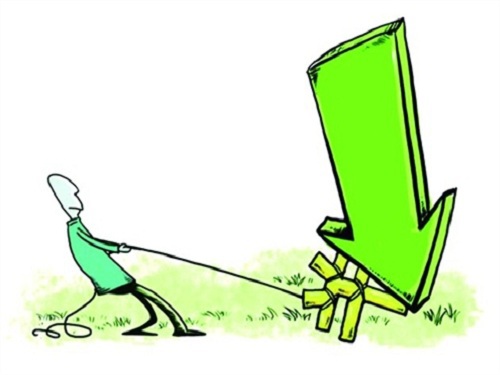According to statistics released by the National Bureau of Statistics in December 2015, the retail sales of clothing, shoes, hats, and needle textiles only increased by 6.9% in December, hitting a new low of nearly 30 years, and recorded only 151.7 billion yuan. In 2015, the total retail sales of clothing, shoes, hats and knitted textiles also recorded a 9.8% increase in less than 10% for the first time in nearly 30 years, which was far below the 12.0% in 2014. In 2015, it recorded a total of 1.3484 trillion yuan. promotion of. Velvet Knitted Fabric,Light Red Velvet Fabric,Dark Green Fabric,100T Polar Fleece Shaoxing Weihui International Trade Co.,Ltd. , https://www.weihui-fabric.com
Ma Gang, an expert in retailing, told reporters that in 2015, the overcapacity has spread from the real estate industry, engineering equipment industry, and iron and steel industry to manufacturing fields such as textiles and clothing. Compared with previous years, 2015 was the most difficult year for the textile and garment industry. According to statistics from the survey, the operating rate of major weaving clusters has not reached full capacity since 2015, and the operating rate in most regions has hovered around 70%. Orders are small and scattered. Enterprises can only choose to reduce the operating rate to ease the pressure of inventory and capital. . ??
However, according to statistics, from the point of view of the company’s production and operation and profitability, the gross margin of the apparel and apparel industry was 13.59% for the first half of 2015 and the ratio of three expenses (the sum of operating, management, and financial expense ratios) was 8.55%. The profit rate is 5.74%. If the effect of non-recurring gains and losses is excluded, the nominal pre-tax profit rate is 5.04%; the industry's inventory ratio is 5.64%, indicating that the product sales are normal; the export ratio is 22.66%, indicating that the export condition is good; The loss of the industry is 14.07%. From this we can see that in the clothing and apparel industry, the production and operation status has worked well. ??
From the perspective of different sub-sectors of the apparel and apparel industry, the reporter noted that the profit margin of the woven apparel industry is slightly higher, but the profitability of the woven apparel, knitted apparel and apparel industry is relatively satisfactory. ??
Yang Daxun, president of Ultima International Fashion Brand Investment Company, pointed out to reporters at this time that if China's garment enterprises were struggling under the pressure of inventory from 2012 to 2014, it was not an issue of inventory in 2015. It was an issue of survival in surplus. In particular, from the perspective of the rapid development of fast fashion brands, the weak demand can also create a miracle for growth. ??
Yang Dayuan also pointed out that the industry needs special attention is that at present, domestic consumer demand has been accelerated from the "quantitative" to "quality" transition, in the current era of "personalized cost-effective" emotional needs, ZARA, Uniqlo, etc. The rise of fast fashion is no accident. It is the inevitable change in the global economic downturn. Returning to the essence of the fashion industry, “focusing on customer research†can be the significance of the Chinese garment industry’s breakthrough in dilemma. ??
According to the latest data released by the China National Textile and Apparel Council, China’s domestic market growth has been basically stable since 2015, but the growth rate has continued to slow. The overall e-commerce channel maintained a relatively rapid expansion. The retail sales of online wearable goods nationwide increased by 23.5% year-on-year, but the growth rate also slowed down in the second quarter. The growth rate in January and November decreased by 10.2 and 6.6 percentage points from the first quarter and the first half respectively. . The slowdown in the growth of domestic demand consumption is related to the slowdown in domestic macroeconomic growth. On the other hand, the imperfect domestic business environment is also an important factor constraining the release of domestic demand potential.